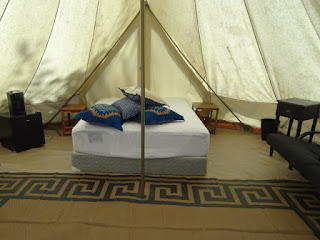Adam & I return to the New York
State Military Museum to visit
the new Cold War exhibit.

The exhibits representing New York National Guardsmen's participation in our nation's military history have expanded throughout the Museum's time at this location.

Hot Spots In The Cold War
opened on November 30, 2018.
At the end of World War II, Europe was "reorganized" with the United Soviet Socialist Republic occupying Bulgaria, Romania, Hungary, Poland, and East Germany. Concerns about Communism in the United States were on the rise. Are there traitors living and
working among us?

China became a Communist country in 1949 under Mao Zedong and allied with Joseph Stalin's United Soviet Socialist Republic. The United States watched Asia with growing concern about spreading Communism. Alger Hiss was found of spying for the USSR in 1950.
Senator Joseph McCarthy chaired a
The spread of Communism threatened the Korean Peninsula.
Korean Peninsula was divided
America sent in troops with

& Chinese troops who
joined the fighting.

New York's 101st Signal
Battalion served in Korea.


The US Air Force was deployed
to control the skies.
My cousin, Ben DiFucci, guarded
Marine fighter planes.
Ted Williams was one of the
pilots he saluted during his tour.
An Armistice (agreement to temporarily end conflict) was signed on July 27, 1953.
1,789,000 Americans served in the Korean War. 103,284 Americans were wounded and 36,574 Americans died.
The Department of Defense estimates that 620,000 North Korean Soldiers died or were wounded and 900,000 Chinese Army Soldiers were killed or injured.
US concern about the spread of Communism did not abate with the Korean Armistice.
"You have a row of dominos set up, you knock over the first one, and what will
happen to the last one is a certainty that it will go over very quickly."
President Dwight D. Eisenhower, April 7, 1954

Fearing that Vietnam would
become a Communist country,
in 1950 the US sent in the
to train South Vietnamese
soldiers for a conventional war.
The North Vietnamese did not
wage a conventional war.
Guerilla Warfare led to more
& more US troops deploying
to the jungles of Vietnam.
The Gulf of Tonkin Incident in
1964 allowed the US to
enlarge the War in Vietnam.
The Viet Cong developed
an elaborate system of
tunnels that allowed them
to move unimpeded as
they fought.
US soldiers went into the
tunnels to kill the enemy.

The Air Force bombed
relentlessly but could
not stop the flow of
supplies along the
Ho Chi Min Trail.
As the War grew in scope,
anti-war protests began
in the United States.
The publication of the Pentagon Papers in 1971https://www.history.com/topics/vietnam-war/pentagon-papersproved that Presidents Eisenhower, Kennedy and Johnson misled the American people about the degree of US involvement in Vietnam. President Kennedy administration actively helped in the overthrow and assassination of South Vietnam President Ngo Dinh Diem in 1963. The intensive bombing of North Vietnam was not effective in slowing or stopping the War.
South Vietnam surrendered to North Vietnam on April 30, 1975, as North Vietnamese troops enter Saigon.
listed POW/MIA.










































